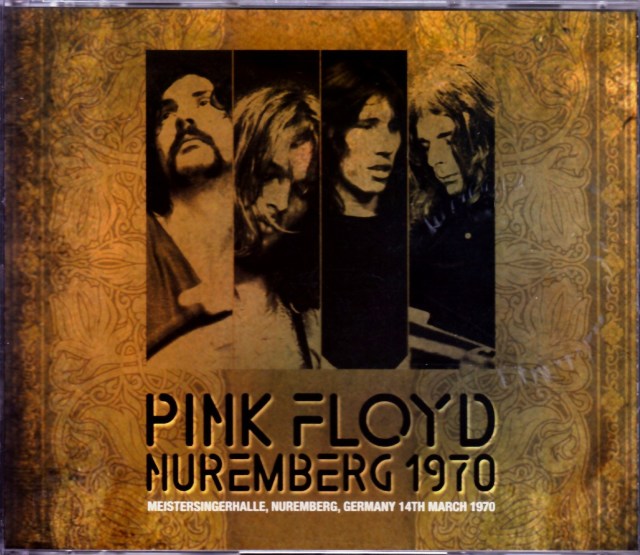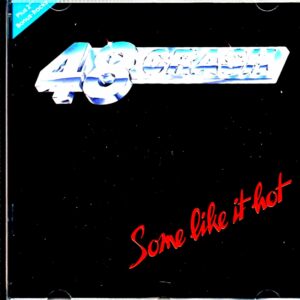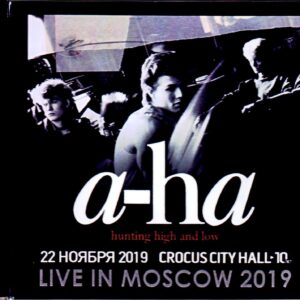Description
Floyd’s latest work is here!! The first title of 2017 that our label has focused on is the performance in Nuremberg, West Germany on March 14, 1970. The sound source has been recorded on the same day with two different sound image characteristics, but this is the strongest 4-disc set including the world’s first disc release!! …However, when you hear the words “Floyd 1970 Nuremberg”, many people may not be able to remember the performance, sound, or representative title. Usually, when it comes to the 1970 Nuremberg sound source, Recorder 1 is the standard, and there are already titles such as discs 1 and 2 of the overseas “THE MASSED GADGET OF HERCULES 1970-1974”. However, as any avid fan knows, this source has noticeable sound distortion due to tape deterioration (or physical distortion of the sound image, such as the tape being stuck while running during recording) at the beginning of the show, and also contains negative elements such as cuts between almost every song, which seems to have been a difficult aspect for fans to remember and was a decisive blow. However, the great thing about Recorder 1 is that it is not a source that can be easily dismissed. This is because this recording basically has a very close and thick sound potential, with a high level of transparency. That is why I think it has the title mentioned above overseas, but even in that case, the subtlety of the quality of Recorder 1 can be seen in the fact that this performance was not sold separately, but was included as one performance in a box set. However, Recorder 2, which came out later, was different. This was a source with no tape distortion like Recorder 1, no cuts between songs, and a clean and stable sound image. However, there were some drawbacks. For example, the sound was partially lost in the middle of “Interstellar Overdrive” (probably due to the tape running out or changing), and although the sound image was neat and beautiful, the sound was slightly lacking in dynamism, and the performance sound was not as close as Recorder 1. Although an overseas title called “MASTERS OF THE MYSTIC ARTS – Heiner B Edition” was released last year as an already released board, it was probably for this reason that it did not become a topic of conversation at all, despite having many more positive elements than Recorder 1. However, if there is an excellent upper version that is the final destination that makes you say “Is this Floyd’s 1970 Nuremberg?”, even though it has its pros and cons, you should be able to rediscover one of Floyd’s great performances that you have overlooked. In the first place, the basic sound quality is not bad at all, but there are two recordings on the same day, but they are not recognized by fans, and there is no title that systematically summarizes them. It is a very strange story even in the light of Floyd’s sound source history, which is still being researched every day. The latest Sigma work is a blow to the scene with a satisfying upper quality! The master used for this work was provided directly to the label by a well-known heavyweight Floyd collector living in the UK, and was produced based on Recorder 1 and Recorder 2, which are particularly excellent from his fan-coveted sound source collection. Recorder 1, which is particularly damaged at the beginning of the show, has been thoroughly discussed with him and the Sigma staff, and has been corrected and adjusted as much as possible to reduce sound fluctuation and distortion. This steady tune-up work has tightened the sound image proportions from the Godfather version mentioned above, and the recorded sound has been updated to the 2017 version. In addition, the song order of “Atom Heart Mother”, which was somehow changed on the Godfather version, has been returned to the correct position (※ encore last), so that you can enjoy the show of that day in the correct set. Meanwhile, on Recorder 2, the performance of “Interstellar Overdrive”, which was partially lost, is synchronized with Recorder 1 in milliseconds, and the missing parts are digitally filled in, bringing it back to the longest seamless version ever, which is the world’s first sound record and is contained on discs 3 and 4. At the same time, hiss noise has been reduced and the pitch has been precisely adjusted, and the optimal gain and fader adjustments have been made to produce the best sound from the tape used, so you can enjoy a version with significantly improved sound quality and quality than the one published on the research site Yeeshkul! It may be a bit self-serving, but unless an unknown Recorder 3 comes out in the future, this polished sound image of this work will surely become the new standard of Nuremberg in 1970. [Recorder 1 with a new skin] Discs 1 and 2 are the standard Recorder 1. In fact, there are several versions of Recorder 1, such as “2nd Gen”, “3rd Gen”, and “5th Gen”, which branched off from the original master recording, but the one used in this work is the “1st Gen” system. However, although this version sounds good, “A Saucerful Of Secrets” is divided into two due to a tape flip during copying, and “Set The Controls For The Heart Of The Sun” is not included, and only that part was supplemented with the 2nd Gen, which traced a different line from the original master and retained the original appearance at the time of recording. Although the entire source still has a hint of tape deterioration and irreparable damage, it is really partial and temporary, and the fact that the new sound shines without changing the basic excellent original sound is what makes this a big upper feeling. For example, although “Astronomy Domine” still has some distortion and ups and downs in the sound image at the beginning, it regains a sense of stability after 5 minutes, with the help of the latest remastering, and the freshness and weight that the original sound originally had explodes, astonishing us. “Cymbaline” has a further improved texture in the mid-to-low range based on the bass sound. The footstep scene in the middle part has a vivid three-dimensional effect, and the final part ends with the sound of the cymbals, which sounds even clearer, and these delicate nuances that tend to be buried depending on the recording can be felt even closer. “A Saucerful Of Secrets” has an increasingly dynamic multi-layered collage of dissonance at the beginning, and you can understand that Recorder 1 is not just full of scratches, but is a recording with depth and amazing resolution just from this scene. By the way, it is also characterized by the fact that at the end of the day, Gilmore’s guide vocal is about half a sentence earlier. In other words, it is a transitional expression between the type of singing two choruses, as represented by the performance at Hakone Aphrodite the following year, and the type of singing only one chorus, as in the early performances, and the fact that this can be heard with a sound full of upper feeling is also worth checking out. As mentioned above, “Set The Controls For The Heart Of The Sun” uses what remained in the 2nd Gen, but the remastering effect is tremendous and the sound quality is almost unchanged. Especially in the middle part (from around 7 minutes 07 seconds), the simple sound transition flows supplely, and you will not believe that it is a different Gen with a high-quality sound that is intoxicating even in the gaps between sounds. Also, “Atom Heart Mother”, introduced as “Not Called Anything” on this day, is a special sound image that allows you to enjoy the amazing growth and spread of the guitar. From around 4 minutes 54 seconds, there was a scene where the organ melody that usually comes in was not played due to equipment malfunction, and the guide vocals that finally come in after a while were sung in a melody that was quite different from other days (this is also the case with the two-voice scene that follows), and you will be surprised by the unique development of this day, which is full of shades of light and dark. [Resurrected from reels, the world’s first full-length version of Recorder 2 on vinyl] Discs 3 and 4 are reel sound sources that have recently appeared as Recorder 2. Looking back at the history of the sound source, it is known that this original recording was made by a person named Heiner B at the time using a German-made portable reel recorder “Magnetophon 301”. However, in this disc production, the slightly higher pitch was accurately corrected, and “Interstellar Overdrive”, which was partially cut in the original recording, was supplemented with Source 1 (= Recorder 1), and it has been revived as a full-length version that can be listened to seamlessly for the first time in the history of sound sources. Another big advantage that Recorder 1 does not have is that the inter-song segments, including MC and light tuning, are included uncut. This is evident from the beginning of the disc, and includes the state of the venue before the performance of “Astronomy Domine”, the sound check scene, and Roger’s song introduction for about 55 seconds. This song also has the advantage of being able to get a perfect overall picture of the performance because there is no severe sound distortion that was noticeable on Recorder 1, which should be a pleasant first experience for those who have only been exposed to the performance on this day with Recorder 1. “Cymbaline” also has no tape distortion or sound distortion that occurred on Recorder 1, so the appeal is that you can hear the performance as it should be. The texture of the sound is also wonderful, and the echo that is lightly applied to the vocals from the middle of the first verse comes out beautifully from the time the echo occurs, and the drum hits and bass sounds boast a resolution that allows you to clearly hear each sound more clearly than Recorder 1. Although the sound closeness and power of “A Saucerful Of Secrets” is one step behind Recorder 1, the total sound quality with no sound distortion at all consistently surpasses Recorder 1, and you should be able to fully enjoy the ultimate in live recording with reels. Gilmore’s (Roger?) MC, which is inserted immediately after the final song, appears uncut, which was cut in the middle of the words on Recorder 1, and “The Embryo” also includes the state until the performance starts, which is about 30 seconds longer than Recorder 1. As mentioned above, “Interstellar Overdrive” had a sound loss around 7 minutes 11 seconds in the original source, but by digitally filling in the same part of Recorder 1, it was finished without any discomfort, and for the first time in the history of Recorder 2, it can be listened to without stopping the musical flow. The last song, “Atom Heart Mother,” includes the MC and sound check, including the song introduction before the performance, and the MC after the performance, which is interrupted on Recorder 1, is also included uncut, which is a nice advantage. The 1970 Nuremberg sound source is a maniac performance, and some inevitable tape deterioration remains, so it may not be a title for beginners. However, the symmetry in which the musical and sound image nuances that are faded in one source are reliably compensated for by the other source, becomes more interesting the more you listen to it, and for intermediate or higher sound source fans who know the joy of grasping the performance of the day from multiple angles from two recordings, this will bring a satisfying intellectual excitement for the first time in a long time. Of course, it is a must-have for those who are experiencing sound sources for the first time, but if you have only listened to one of the sources,Even if you don’t have one, this is a masterpiece that allows you to get close to the buried masterpiece from 47 years ago. The two recordings on the same day have excellent sound quality that absorbs the witty performance on the day and the breathtaking air of the venue to the fullest, but they have remained hidden in the history of sound sources like a bird with a wounded wing. Now, with its wounds fully healed, it has taken flight as a four-disc set full of vitality, allowing us to encounter the great performances we had missed!! Live at Meistersingerhalle, Nuremberg, Germany 14th March 1970 Recorder 1 Disc 1 (47:56) 1. Astronomy Domine 2. Careful With That Axe, Eugene 3. Cymbaline 4. A Saucerful Of Secrets Disc 2 (59:46) 1. Soundcheck 2. The Embryo 3. Interstellar Overdrive 4. Set The Controls For The Heart Of The Sun 5. Atom Heart Mother Recorder 2 Disc 3 (48:13) 1. Intro / Soundcheck 2. Astronomy Domine 3. Careful With That Axe, Eugene 4. Cymbaline 5. A Saucerful Of Secrets Disc 4 (62:49) 1. Soundcheck 2. The Embryo 3. Interstellar Overdrive 4. Set The Controls For The Heart Of The Sun 5. Atom Heart Mother






Reviews
There are no reviews yet.